These Ornamental Fish Are In No Way Your Run Of The Mill Common Carp
Did you know that “koi” is a homophone for a Japanese word meaning “love” or “affection?” Or that for this reason, koi carp are often viewed as symbols of friendship or love?
Even outside of fish and pond enthusiasts, many people are aware of the beautiful colors and impressive size of koi fish. However, the world of koi fish keeping and breeding is far larger and more complex than many people realize. In addition to the particular care of koi fish and their garden pond, a potential koi hobbyist also needs to be aware of the many different koi fish types available.
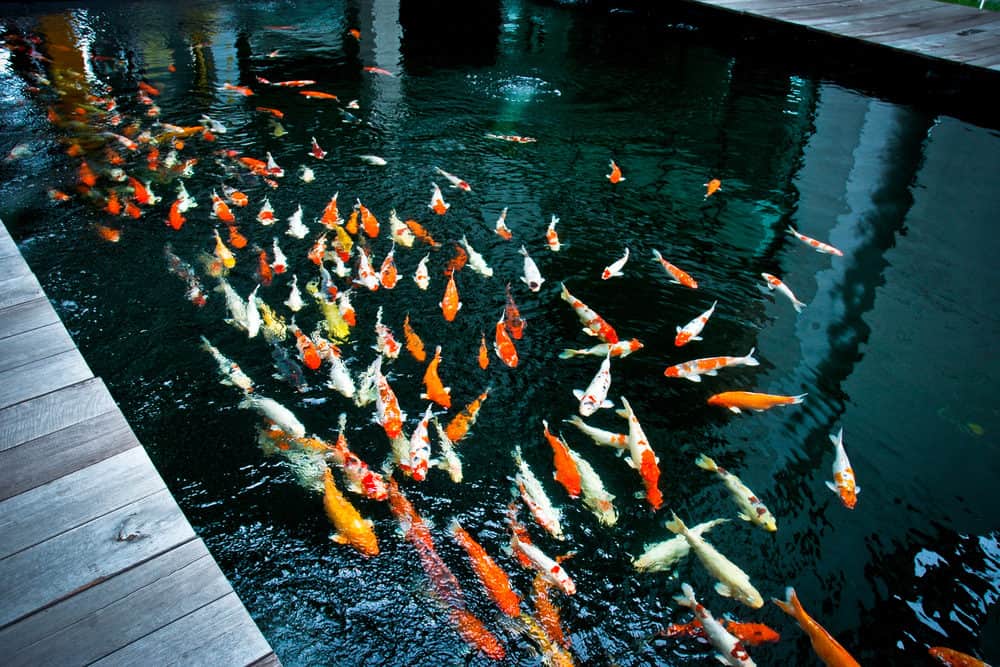
Technically speaking, the Japanese koi fish that you see in water gardens and koi ponds are colorful varieties of Amur carp that many people keep for decoration, competition, or companionship. These gorgeous ornamental fish come in many different color combinations, patterns, and even scalation. Luckily, there are ways to tell what variety of koi a fish is by looking at it.
After determining that the conditions, water, and temperature were perfect for healthy koi, I put together this list of koi species and what makes them unique. In this guide, you will find:
So, what are some of the most popular or unique koi varieties? Let’s dive in.
One of the most popular and iconic varieties of the beautiful koi is the Kohaku koi fish. The name “Kohaku” means “red and white,” or “amber,” which is why these fish are always white-skinned with red markings.
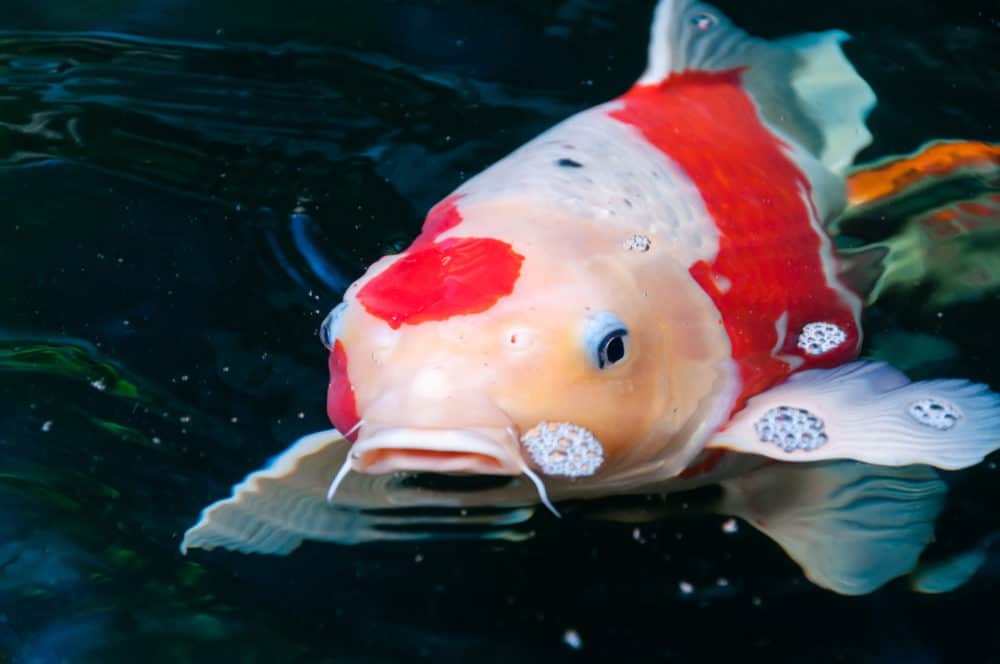
Established in the late 19th century, Kohaku are one of the oldest ornamental koi to be bred- so their reputation is earned by a long history. These fish are prized for the brightness of their fiery colors and the sharpness of their orange-red markings.
When it comes to weight, a healthy Kohaku koi can be on the larger size. These koi also come in various patterns with different styles of red markings, so even within the Kohaku breed, there are multiple types to choose from.
Taishō Sanshoku, also known as Sanke Koi or Taishō Sanke, is a type of koi that looks very similar to the Kohaku but also has small, black markings in addition to the red ones. These gorgeous tri-colored fish still typically have white bodies with red-orange patches accompanied by the little dark-colored spots.
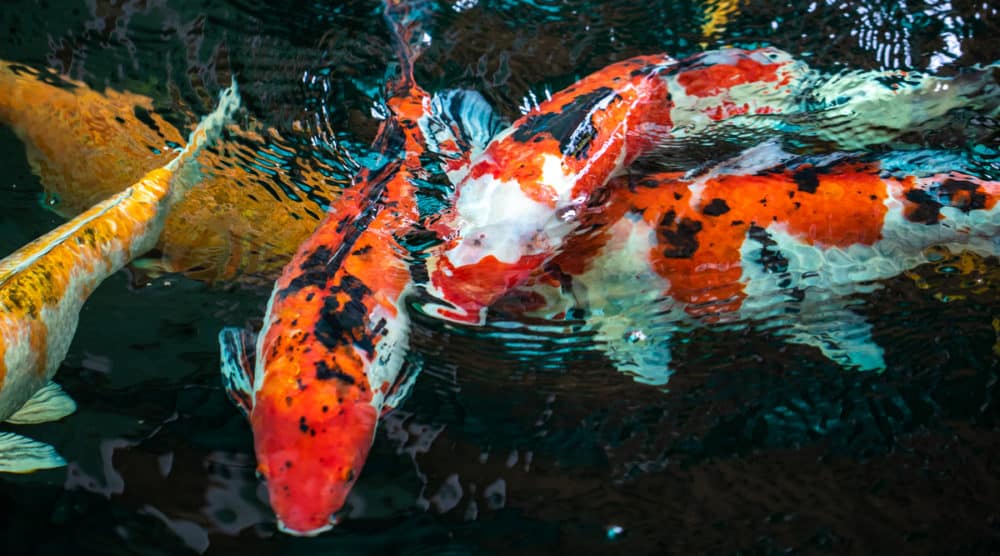
These koi are called Taisho Sanke because they were first shown in 1914, during the Taishō Era. Many koi enthusiasts in the United States just call these fish by their nickname, Sanke.
For those looking to breed koi for their beauty, look for Sanke koi with pure white bodies, vibrant red marks, and black markings spaced evenly around its body. Ideally, there should be no black markings on the fish’s head, but black spots on the other red or white sections of its body are considered top-quality.
While many new fish pond hobbyists think of koi fish with brilliant white, red, and orange colors, there are a few that look a little different. The Chagoi variety of koi is one of these- and, interestingly enough, it is a fish that is often kept for its personality rather than just its appearance.
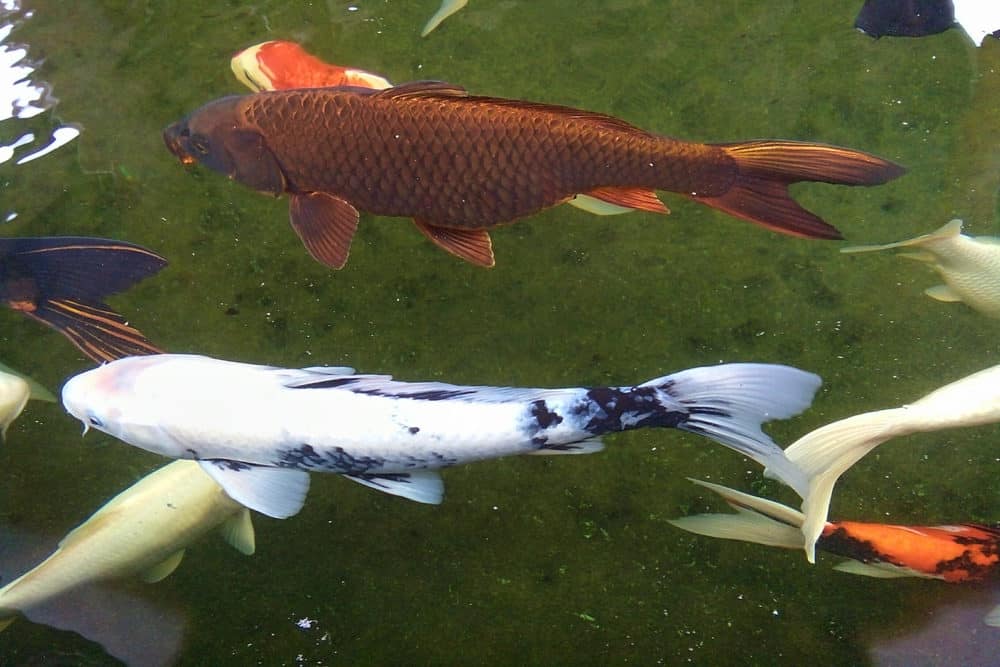
The name “Chagoi” is Japanese for “tea” or “tea-colored,” and these lovely fish have the hues to match. Chagoi koi often come in shades of brown, copper, bronze, dark orange, or olive green. Tan Chagoi, the color of milky tea, is highly valued by koi collectors. Like the Kohaku, Chagoi has a few different varieties, including Brown, Green, and Rootbeer Chagoi.
This variety of koi tend to be pretty big, and they are also known for being friendly enough to eat out of people’s hands and greet their caretakers. These sweet koi are also often considered a sign of good luck for koi enthusiasts.
One of the most striking varieties, the shining Ōgon koi makes for a lovely shimmering addition to a koi pond. The two main subcategories of ogon are Yamabuki Ogon Koi and Platinum Ogon Koi. These koi fish have a metallic sheen to their scales and come in multiple metal-inspired varieties. The name “Ōgon” means “gold,” which is the most common color for this koi.
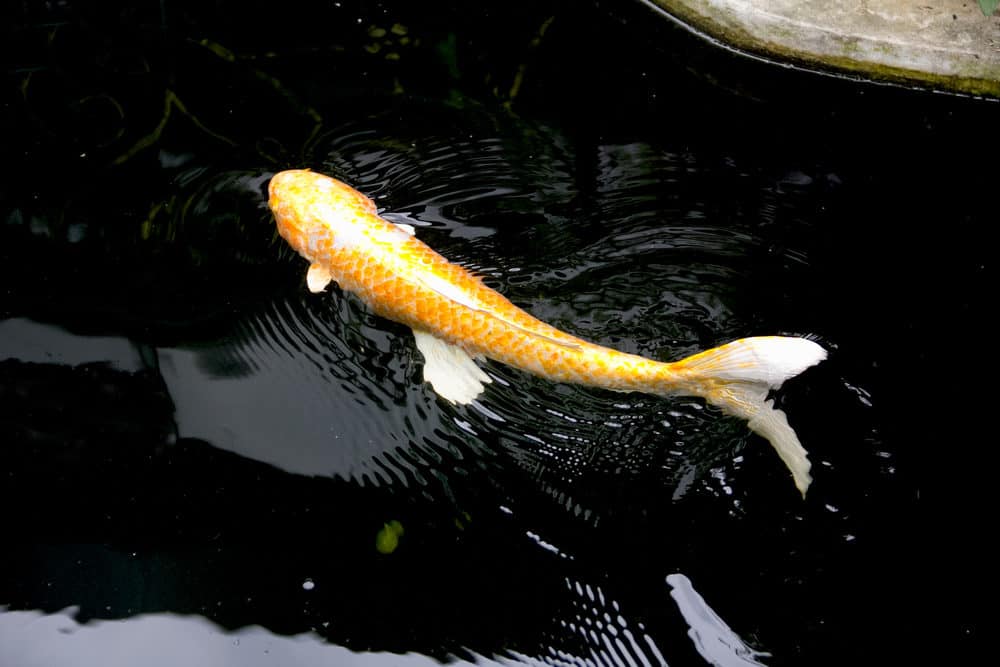
Ōgon koi are typically one solid color and are born with gold, bronze, platinum, and orange. This type is relatively new as far as koi species are concerned, having been bred in 1946 by Sawata Aoki using a wild-caught carp he found in 1921.
In addition to their beautiful colors, the Ōgon koi are often prized by koi collectors for their outgoing nature, as they are known to be among the friendliest varieties.
Many koi enthusiasts looking to add some fish with interesting, unique, and varied patterns will end up getting the striking Utsurimono koi. These colorful aquatic companions typically have a black, white, and red or yellow zebra color pattern.
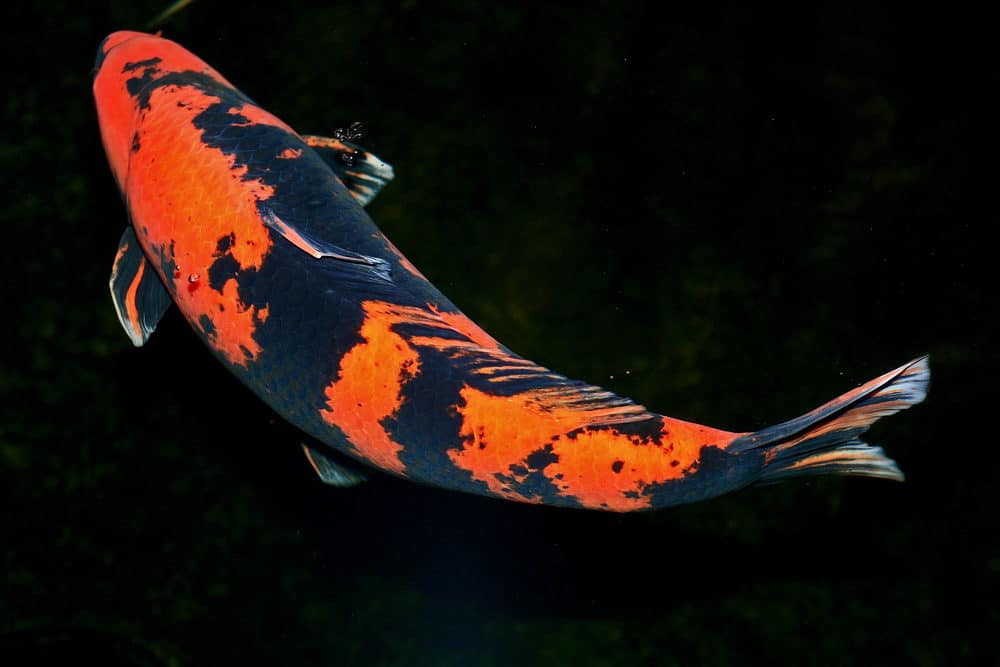
The Utsurimono koi, commonly called Utsuri, is a black koi that comes in multiple color variations. The Shiro Utsuri are gorgeous black fish with a pure white pattern, while the Ki Utsuri variety is black with a yellow overlaying pattern. Hi Utsuri’s markings are red or red-orange.
“Utsuri” comes from the word for “to print,” which is inspired by the black markings on the fish and their potential resemblance to ink stains. The high contrast among the colors and the fact that there are three varieties to choose from make the Utsuri koi a popular choice for many ponds.
While many species of koi are beautiful because of their complexity, the Bekko koi are more known for the beauty in their simplicity. These koi are typically one solid color and dotted with black markings, which are called Sumi.
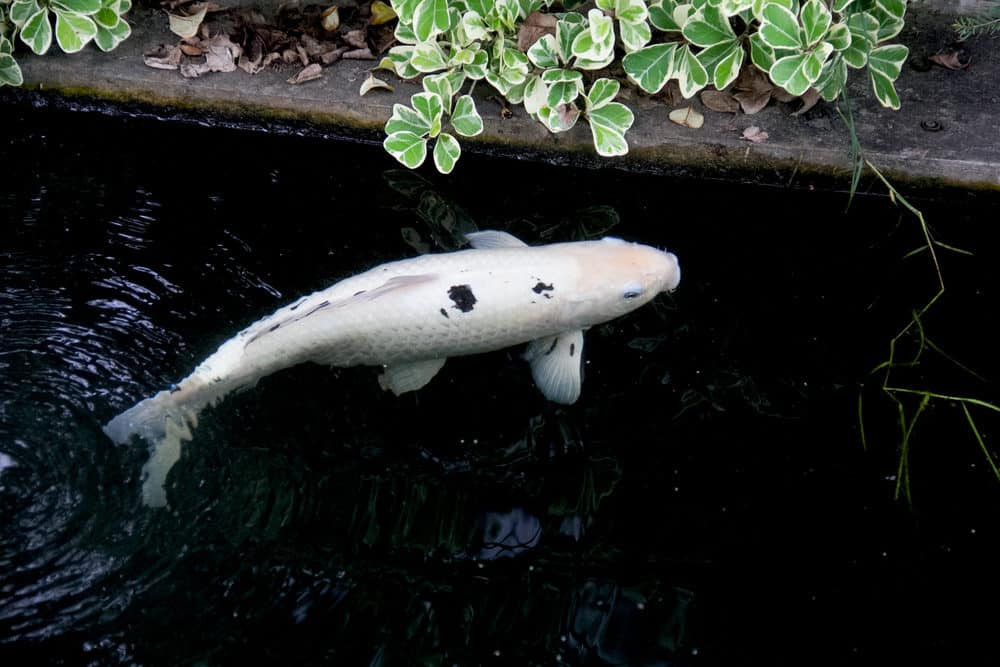
One of the great things about Bekko koi is that they come in three distinct varieties, all with different colors. The most common kind is the white Shiro Bekko, while the red Aka Bekko and yellow Ki Bekko varieties are more difficult to find.
The name for the Bekko koi fish comes from the Japanese word for “tortoiseshell.” Some people describe the black marks on their back as a stepping-stone pattern, and even koi experts agree that it’s easy to confuse a Bekko for an Utsuri.
While not fully embraced by the traditional koi community, butterfly koi are a relatively recent addition to the koi world. This pond fish has only been around for about 50 years - to back when Crown Prince Akihito of bred an Indonesian carp to a Japanese pond smelt.
The butterfly koi is characterized by its long flowing dorsal fin, tail fin and pectoral fin.
This highly unique koi fish type first originated when a breeder mixed Kohaku and Asagi koi genes. This created a beautiful variety of koi with Kohaku-inspired markings with the blue or gray of the Asagi appearing over the red scales of the pattern. In Japanese, the name Koromo translates to “robed,” which suits the complex colored markings on its body.
Like with many varieties of koi, there are several subspecies within the Koromo group, each with its own level or rarity. The type of Koromo that koi pond enthusiasts often see is the Ai Goromo, which has the same coloring as the traditional Kohaku but with a black, blue, or gray edge to the red markings.
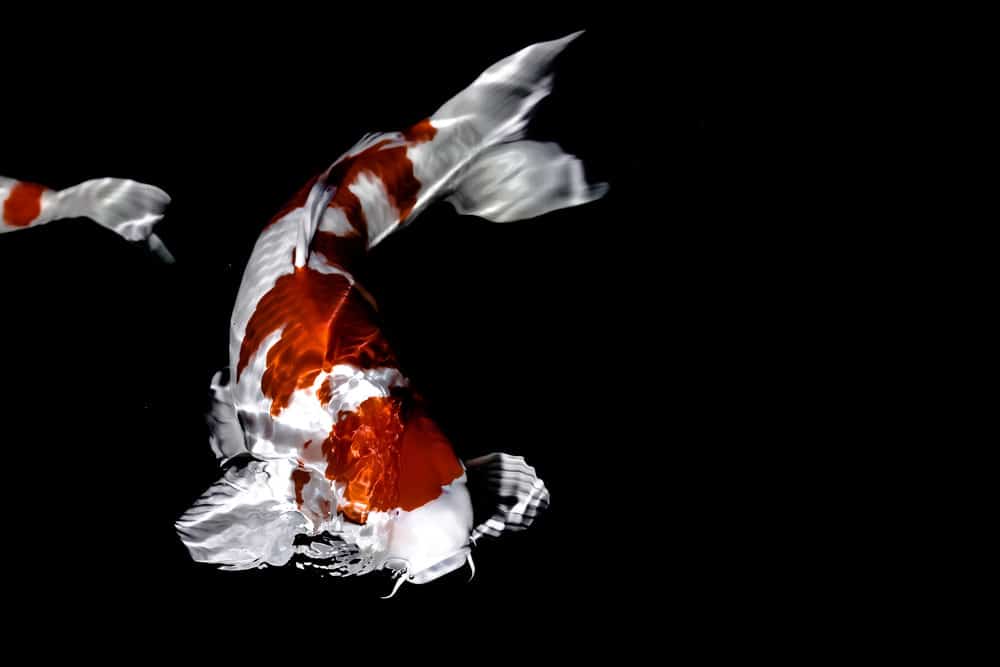
Some of the more rare varieties of Koromo koi include the Budō-Goromo, a koi with deep burgundy marks on top of the red pattern that looks similar to grapes. Even more rare is the Sumi-Goromo, a beautiful koi whose markings are such a dark shade of burgundy that they almost look black.
Some koi enthusiasts have difficulty breeding show-quality Koromo koi because, ideally, the fish should have the dark tint to their scales only on the red markings and evenly spaced around its body. The spots may also get darker as the fish gets older.
While many koi keepers try to select their fish based on the brightness of their colors, the Asagi koi are a popular exception to the rule. One of the oldest known species of koi, these lovely fish are typically white, yellow, or cream with occasional red markings. They are known for the intricate netting or diamond-like pattern of blue or gray on their back, which many people think resembles armor.
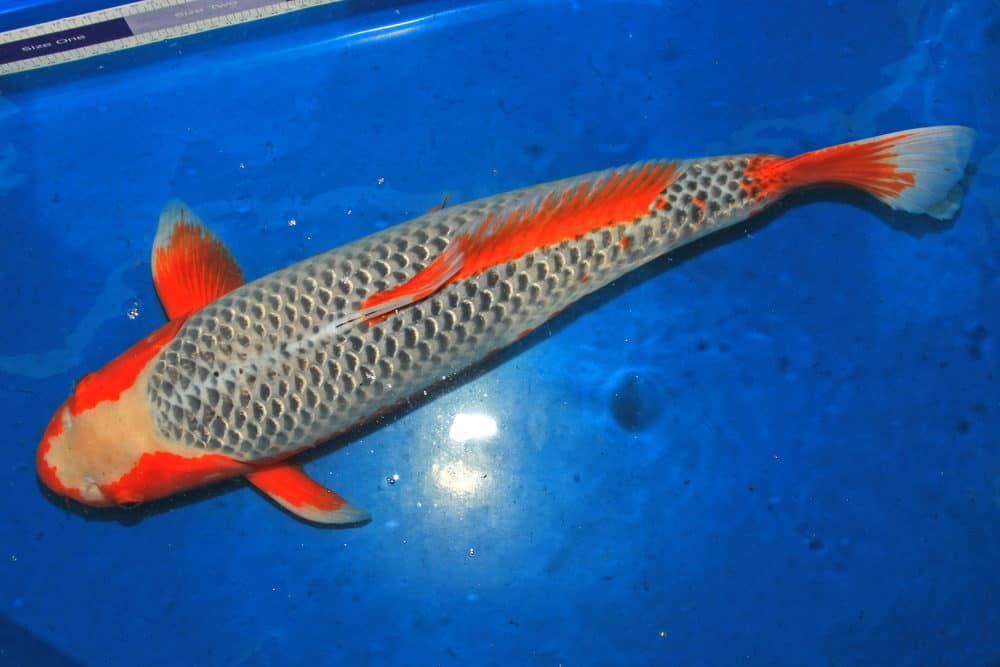
The colors of Asagi koi fish are not consistent across all of the fish- some have white heads, while others have their gray color extend to the end of their face. Some have red coloring on their fins, sides, or even their stomachs.
Koi Breeding back in the 1980s between mirror Carp and Ogon Koi produced what is known as the "ghost koi". The ghost koi is a voracious pond fish that grows large relatively quickly. They may not be suitable for smaller backyard ponds.
In Japanese, "Goshiki" means " five colors " or "five-colored," which is a more than suitable name for this remarkable variety of koi. While a predominantly red koi, they often have a pattern that contains a combination of many of the most popular koi colors, including red, white, blue, gray, and black. Not every Goshiki has all five colors (some of them have colors blended together), so it can be challenging to differentiate.
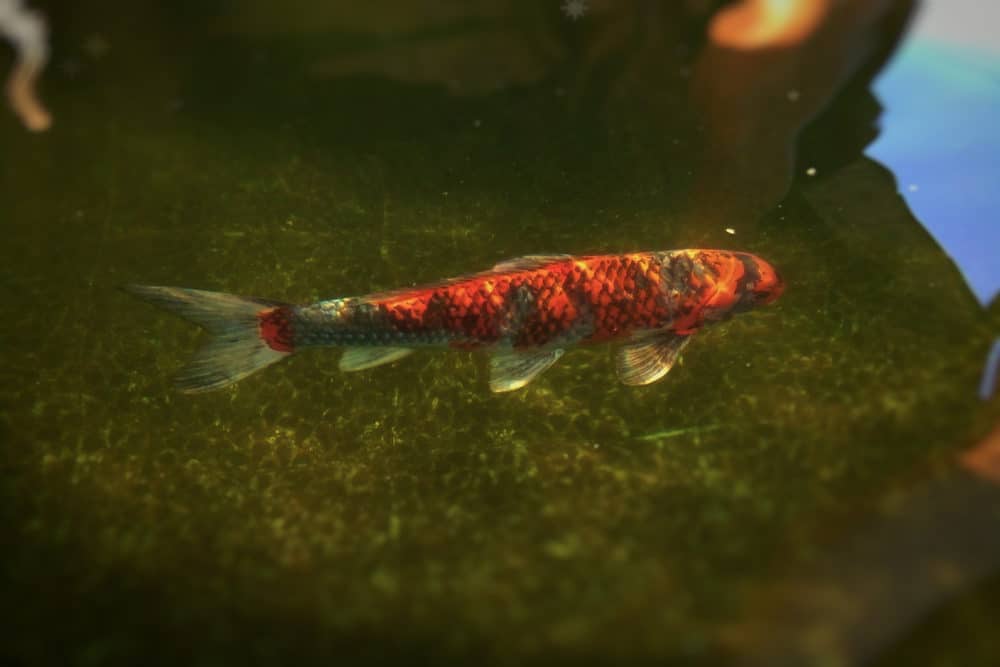
The first Goshiki koi were most likely a hybrid of Sanke and Asagi koi. Their distinct color combinations are almost the exact opposite of Goromo koi, with a more shaded body color and flawless, vibrant red/orange markings.
When looking for a competition-standard Goshiki koi, enthusiasts will look for a clear red Kohaku pattern and the darker Asagi net-shaped markings over the rest of the scales. There should be no dark marks on the bright red pattern, and the fins should be pure white.
Kin Gin Rin koi, also called Kinginrin or Ginrin koi, are not a unique koi fish type - instead, they are koi with a specific type of scales. Kin Gin Rin koi come in practically every color variation of koi, so this type is not defined by the colors of its pattern but by the shininess of its scales.
One of the most intriguing and striking varieties of koi, the shimmering Kin Gin Rin fish, have a shiny metallic sheen that makes their scales almost reflective. Their name translates loosely to “gold and silver scales,” and it’s pretty obvious why. Virtually every type of koi can have these metallic-type scales, so it’s possible to see Kohaku or Goshiki or even Ōgon Kin Gin Rin koi.
The cause of this brilliant silver or shite sheen or the scales is the natural presence of guanine, a crystalline material that helps wild carp hide from predators by camouflaging with the water. Koi keepers selectively bred this trait to create the fantastic Kin Gin Rin koi.
For a Kin Gin Rin koi to be considered competition-quality (or even a true Kin Gin Rin), it needs to showcase at least three complete rows of the trademark metallic scales. These types of koi will have the same number of metallic scales throughout their life, but as it ages and its skin grows, the scales may be spread out across its body. Koi with consistent metallic scales (or a metallic sheen to its skin) are highly sought after by competitive koi keepers.
Like the Kin Gin Rin koi, the Tanchō variety of the fish are less of a unique subspecies and more of a koi born with a specific color combo. Unlike the Kin Gin Rin and most other varieties of koi, Tanchō can’t really be bred for their unique pattern- most often, Tancho koi are Kohaku, Showa, or Taisho koi that happen to be born with the perfect marking.
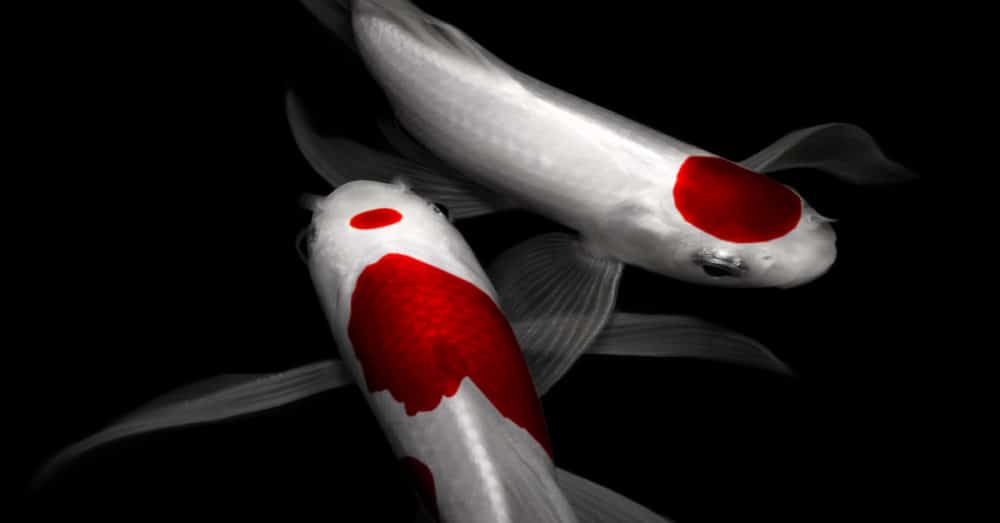
The mark that separates a Tanchō koi from the rest is a round, red circle on its head. These koi have strong cultural significance due to their resemblance to the Japanese flag, and they are named after the Japanese red-crowned crane- a bird with a similar red circle on its forehead. These cranes are important to the culture in addition to being symbols of good luck.
Tanchō koi can come from almost any species of koi, and for that reason, the rest of its body (besides its red forehead spot) will have the color patterns genetically gifted from its parents. Sometimes, their bodies are pure white aside from the signature mark; other times, Tanchō koi have black spots. While a red circle is the most highly-sought forehead mark for Tanchō, a mark in the shape of a diamond, heart, or oval is also considered correct.
One of the most interesting, unique, and downright strange koi fish types is the Kumonryū. Definitely the most mysterious fish on the list, this gorgeous koi come in striking patterns of black and white that are often described as “billowing clouds” or “curling white markings.”
With a name that translates to “nine tattoos dragons,” the Kumonryū koi has quite the reputation. Some say that the name comes from the legend of the dragon Ryu who changed into a cloud.
Probably the most interesting aspect of the Kumonryū is the fact that it can’t be judged based on its color pattern- because the pattern changes. That’s right- with a Kumonryū koi, you can have a color-changing pet in your water garden. The color changes are most often seasonal, with their black pattern coming out in the winter months and the white becoming more apparent during summer and spring.
There are currently no definitive answers to why the Kumonryū koi change their colors, which makes them all the more interesting. Some koi enthusiasts say that the color change happens due to temperature or pH variation, but not everyone agrees on the reason for the alterations. Sometimes, the koi’s color pattern can be entirely different than it was the previous season, or even the same season during the previous year.
With a name that means “autumn green” in Japanese, the beautiful Shūsui koi have quite the reputation to live up to. These striking fish were actually created by crossbreeding the Japanese Asagi koi with the German Doitsugoi, or “mirror carp.” The result is a shimmering, uniquely colored koi that can have blue-tinged coloring (from the Asagi lineage) generally along the lateral line on their backs, in addition to other markings in red on their body and sides.
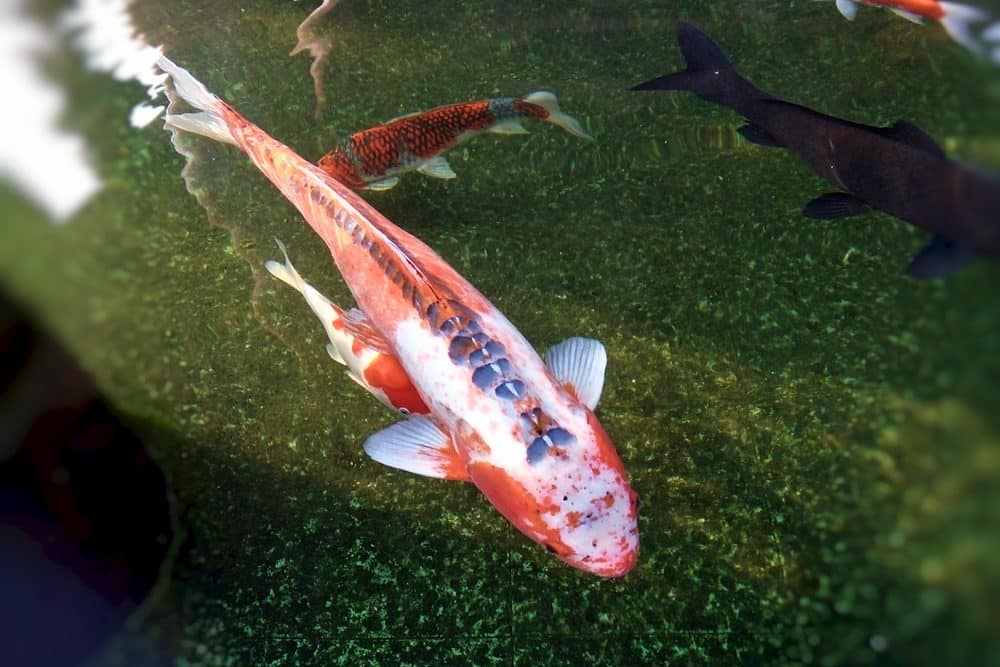
The most interesting aspect of the Shūsui koi is that it doesn’t have any scales, except for one line of the mirror scales creating a dorsal stripe. This is because the German Doitsugoi species of fish are a scaleless variety of carp, a trait that is passed down to the Shūsui. The bright patches of color on its skin are typically extra vibrant due to the lack of scales, and the color patterns are very clear.
Just like the other Asagi koi, this variety can have a blue/gray pattern on its back, white bodies, and red markings along its sides. Competitive koi keepers look for symmetrical markings for both the blue and the red color patterns.
Many types of Koi have one or more colors associated with them. If you're curious about what koi contain certain color combinations, check out the articles below:
The koi angel is actually an angelfish that is best suited to your aquarium rather than your koi pond. We do have more information on the site about the koi angel if you're curious.
The betta fish is a smaller freshwater fish that traces its origins back to Asia. While their long flowing fins may resemble Butterfly Koi, these fish aren't koi. There is variety of this fish that can be purchased at pet stores called a "koi betta" - which owes its name to the fact that this particular variety of betta looks like a koi.



